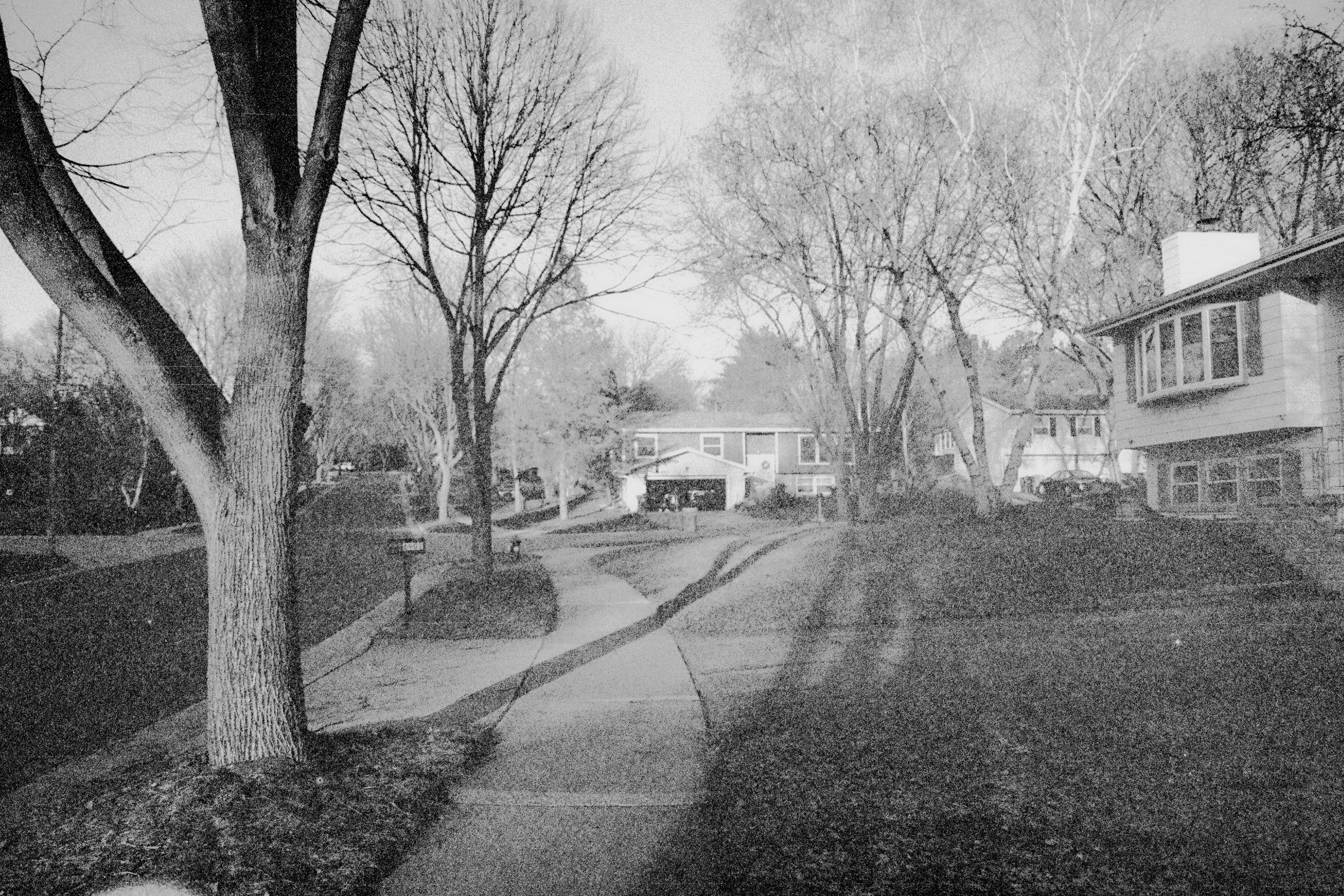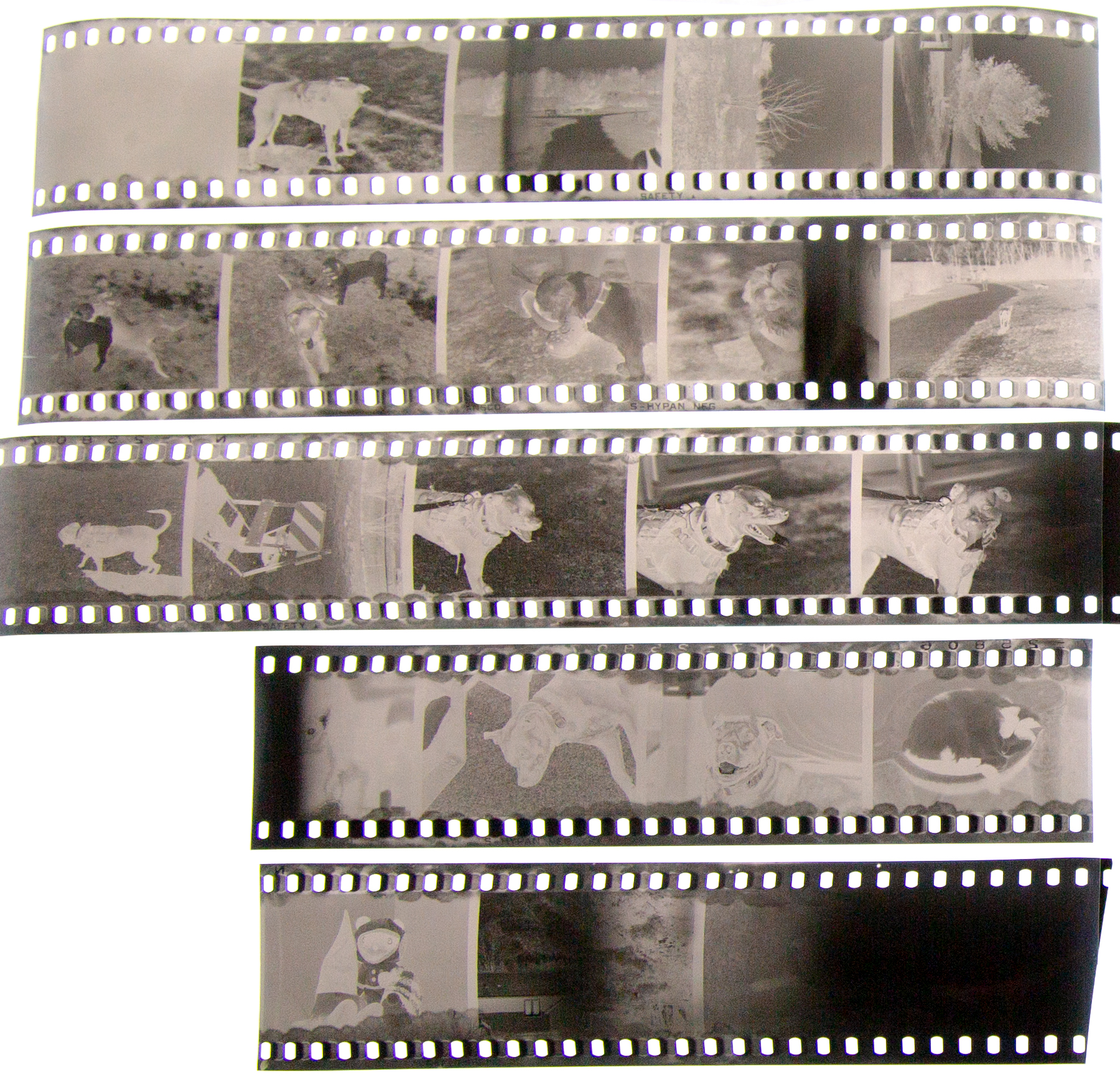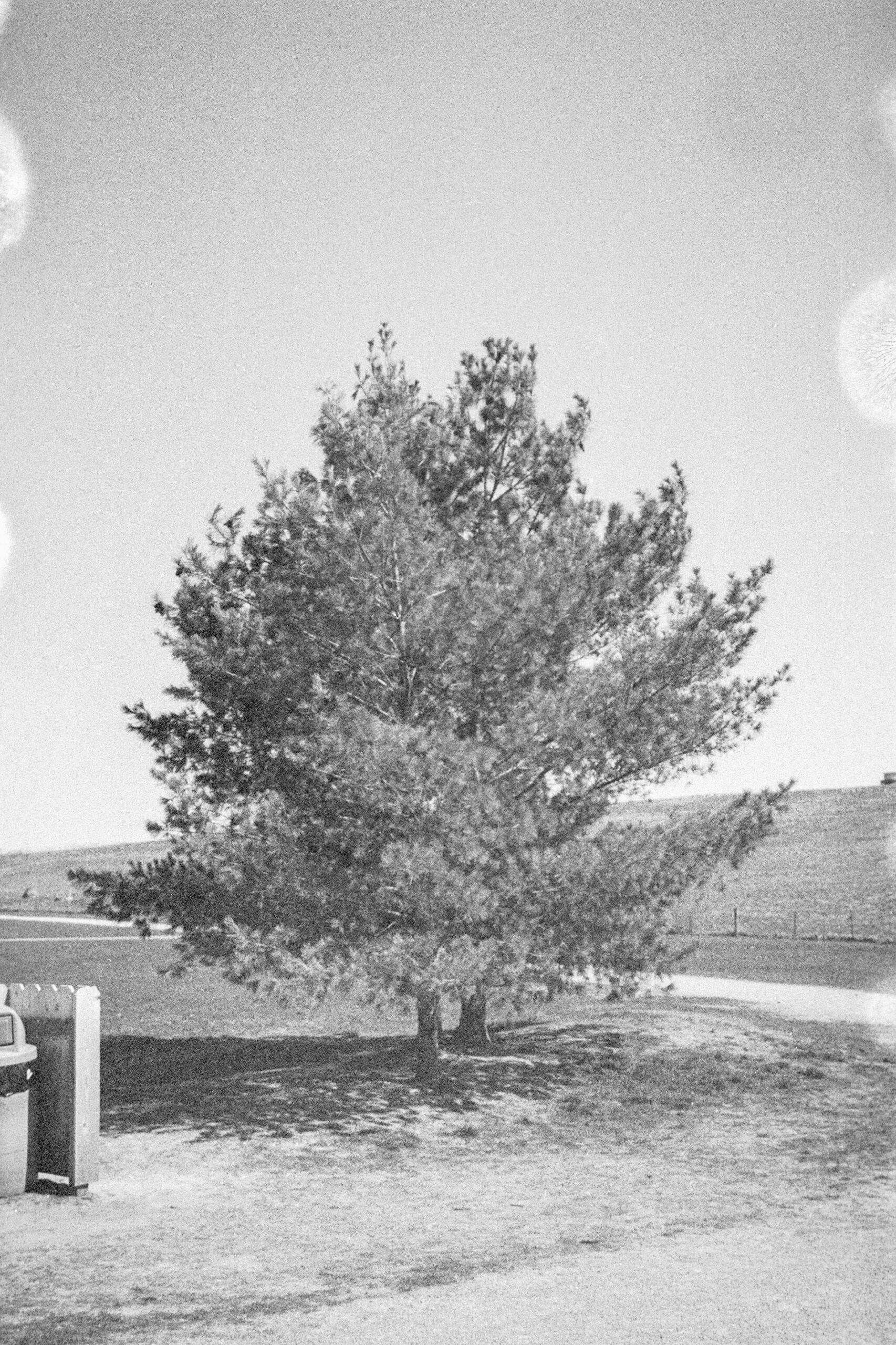I was walking through Retro Revolution in Madison when my friend pointed out a Watson-style film loader. I pick it up and shook it. It had film. I paid $20 for it (they tend to trade for around $30 when they’re empty, so it was win-win) and took it home. First, I had to identify the film.
A note on the film scans included in this article: I shot the sleeved negatives on my 5D Mk3 on PhotoMidwest’s huge light table. I brought the RAW’s into Lightroom, and set the white point to +100, black point to -40, contrast to -50, and then adjusted exposure.
Once I got the film home, I loaded a handful of frames and shot it at various ISO’s. I find my Canon EOS 5’s on-body flash to be really helpful in getting test shots around the house handheld at low ISO. I’ve been working with Kodak Xtol lately, so I figured I’d start out with a somewhat normal development: in Xtol stock (replenished) for 8 minutes, with continuous agitation until the end of the first minute and then four inversions per minute. The results were suboptimal.

This first test was really uninformative. I didn’t even end up with a clear rebate, where I was hoping to find the name or identification number of the film. I did see a number on the edge, which I think is a lot number, but Google didn’t reveal anything from that. I also noticed the sprockets were rounded, suggesting it might be a cinema film rather than a film for still photographs. Additionally, I think this may have been underdeveloped, and that the dense fog was from accidentally opening the film gate, so I may try Xtol stock again in the future at very low ISO, to see if it benefits the grain characteristics.
I hadn’t learned anything and was feeling a little unenthusiastic. I loaded another roll, and without even focusing the camera I shot a color correction card taped to the wall at ISO 25 repeatedly and developed it in Diafine for 5+5 minutes.



That’s more like it. The base fog is very thick, but a clear image is formed, and we have a readable rebate: “S-HYPAN NEG”. A quick Google Search reveals that this is Ansco Super-Hypan, last manufactured in 1967. And if the name didn’t give it away, the color card confirms this film is panchromatic. I begin to get excited at this point. I can take photos with this film and get images… but I don’t want to work at ISO 25, and the base fog is atrocious.
It was downhill from there for a while. Next up, I shot at ISO 80 and developed in Clayton F76+ (sold as Arista Liquid Film Developer). The base fog was thicker than with Diafine and the image was less clear, probably due to having been shot at a higher ISO. I was beginning to believe I’d be stuck at ISO 25. I loaded another roll and bracketed shots at 12, 25, and 50, and throwing all caution to the wind I stand developed in HC-110 1+99 dilution, agitating until the end of the first minute and then placing it into the refrigerator for 1 hour. These were the worst results of the entire process by far.

Next, I decided to start working with restrainer. I loaded another roll, shot the test card at 50, 25, and 100, and then shot a few more frames at ISO 80, and developed for 10 minutes in HC-110-H (1+63) with 30 drops of 1% w/v benzotriazole, approximately 2mL in 400mL of developer. This should be equivalent to 50mg per liter of developer. I agitated the way I normally do, which is until the end of the first minute, and then four inversions every minute. The base fog was significantly reduced by the restrainer, but the density was low, as expected. Taking an ancient film with already-low sensitivity and then restraining the developer is going to result in lower density.

At this point I had the fog somewhat under control but now I have a contrast problem. I want to boost highlight density without increasing base fog, which means keeping development time short and increasing developer concentration and agitation. I was cautious about increasing developer concentration because I didn’t want to give any extra power to the fog. I loaded another roll and shot at ISO 50 and 100, then developed for 8 minutes in HC-110-D (1+39), again with 30 drops of BZT, and now with continuous agitation.

We’re on the right track. The increased concentration doesn’t seem to thicken the base fog, nor does the continuous agitation, but the highlights are significantly better. The frames shot at ISO 100 are still thin, and extending development time feels risky, but I gave it a shot. I shot the next roll at ISO 100 and developed it in HC-110-B (1+31) with 30 drops of BZT and continuous agitation. Since I was pretty confident that I would get results I took the film on a walk around the block. The increased concentration really started to thicken the highlights, and ISO 100 seems to be usable. Although the base fog is starting to return a bit, I got the first shots I thought were worth sharing.






Since the base fog was coming back in with more concentrated developer, I thought I’d add a bit more restrainer. I loaded more film and went to the dog park. I developed in HC-110-B with 45 drops of BZT, and extended development time to 9 minutes, with continuous agitation. The results were much better, and I was even able to print in the darkroom from the negatives.






I’ve given rolls out to friends and recommended they shoot at ISO 100. The recommended development is 9 minutes of continuous agitation in 400mL of HC-110-B with 45 drops of benzotriazole. Perhaps more to come.